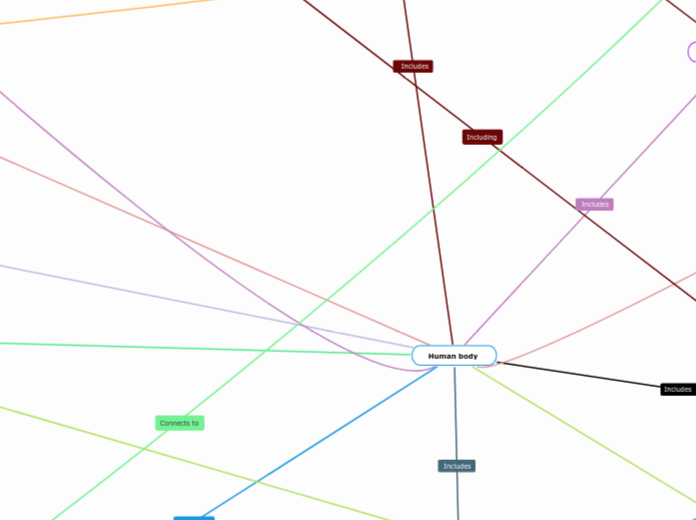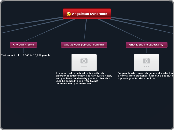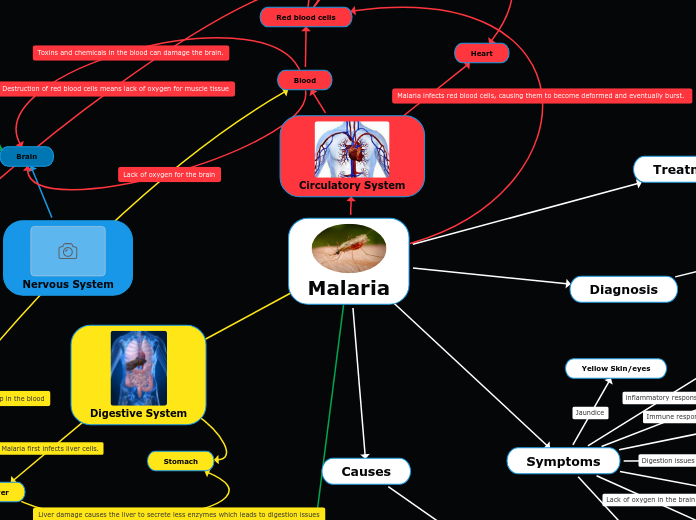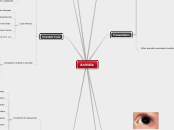Muscular system
smooth muscle
Digestive System
Found throughout Gastrointestinal
food, water and waste move through the Gastrointestinal using contractions
Internal Organs
Ability to contract while urinating
ability to stretch as it fills with urine
Diaphragm
contract and expand
Lungs to fill with oxygen and exhale carbon dioxide
involuntary movements
Movement that are controlled by the brain stem and you do not have to think about to execute
add all these to their respective connection
salivation
tremors
digestion
Heart beat
skeletal muscle
Multiple Sclerosis
No permanent treatment
A monoclonal antibody has proven to decrease relapse rates and also blocks moment of peotnetially damaging immuncells in the bloodstream
Immune system attacks nerve endings by desolving fatty acids
desterioration of nerve fibers result in permanent damage
Communication error between brain and body
Numbness or weakness, Lack of coordination, Blurry vision, Vertigo
Problems with sexual bowel and bladder function
, Fatigue and Cognitive problems
Muscular dystrophy
Your body does not produce enough protein to form healthy msucle
Temors
Deep brain stimulation (DBS)
is a surgically implanted device in the chest that will send electrodes to the part of the brain (that controls involuntary movements) to return some control to the brain
Does not have permanent treatment
There are devices designed to make having muscular dystrophy easier
grabbing devices
Computer Technology
Wheelchairs
heart issues
Pacemakers
Small device consisting of wires and a battery that is surgically implanted and will send electrical shocks to the heart causing it to beat.
breathing issues
trouble walking
stiffness
bones
Tendons
Fibrous tissue that attaches skeletal to muscle to bones
Voluntary movement
Motor movements
receiving signals sent by motor cortex
Only semen can be ejeculated when erect
Can girls have erectile dysfunction
No purpose
Human body
Respatory system
Moving fresh air into your body
Removing waste gasses
Asthma
Wheezing and the inability to breathe due to narrow airways
Inhalers
Clear up your airways and make it easier to breathe
Steriods
Help reduce inflammation in airways
Oxygen therapy
Helps the person to breath easier
Emphysema
Gradual damage of lung tissue
The alveoli
Bronchitis
Inflammation of larger airways of the lungs
Lungs
exchange
Airways
Nose
Air to enter your body and makes the air warm and moist
Breathing muscles
Abdominals
Movement and hold organs in place
Diaphragm
Die without it
Separates the chest from the abdomen
Protect the organs in your chest
Trachea
Oxygen
Reproductive system
Male
Bulbourethral Glands
Pre-ejeculate
A clear slipper fluid that neutralizes any acidity on the Urethra
Prostate Glands
Below urinary bladder in front of rectum
Produce semen
Seminal Vesicles
Fructose
Most of ejaculatory fluid
Sperm with source of energy and ability to move
Passage for Urine
Passage for Sperm when errect
Ejaculatory Ducts
Vas deferens
Sperm out of testicles
External
Testicles
Two oval organs
Testosterone and Sperm
Edidymitis
Forcefully expel sperm when ejeculation occurs
Deferent Duct
the backside of each testicle
Testicular cancer
A bump on the testcle that can quickly spread to other parts of the body
Orchidectomy
Infected Testicle is removed via surgical procedure
Can smetimes lead to infertility
Before treatment begins people may consider sperm banking
A sample of your sperm is extracted and frozen for future use to impregnate your partner
The process of artificial insemination
Scrotum
a loose sac of skin hanging behind penis
Protection for Testicles and temperature control
Sperm production
The Penis
Glans
The head
Covered with loose layer of foreskin
Removed by Circumsicion
body/shaft which is the main part of the penis
The root
Attached to body/abdomen
Female
Vulva (external)
Hymen
Urethra
Tube that connects Bladder to outside of body
Vaginal Opening
For babies and Menstrual blood to exit
Clitoris
Labia Minora
Inside labia Majora
Urethra
Labia Majora
Encloses/Protects other external organs
"Large lips"
Internal
Fallopian tubes
Becoming blocked
Tubular Factor infertility
Either obstruction, scarring, adhesion or infection prevents eggs from traveling in the tubes
In Vitro Fertilization (IVF)
Taking fertility drugs that will stimulate ovaries
Doctor will collect eggs from ovaries and combines with sperm in a lab
Laparoscopic Surgery
Unblock fallopian tubes and remove scar tissue
This surgery is not always successful, You will have a 20%- 40% chance of getting pregnant
Fertility drugs
Increase chance of ovulating
Will not unblock a Fallopian tube but will to become pregnant
Will not be successful if both Fallopian tubes are blocked
The cause of 30% of infertile women
If the egg can not travel from ovaries to the uterus using the fallopian tubes, the sperm is unable reach the egg to fertilize it
Narrow tubes connecting ovaries to upper portion of uterus
A pathway for eggs created in Ovaries to enter uterus
Ovaries
Two small oval glands on either side of uterus
Produce eggs and hormones
Uterus
Cervix
The lowest part of Uterus and connect to vagina
Corpus
Fertilized eggs are inplanted
Fundus
Connects to Fallopian tubes
Where baby develops up until birth
Contract to push baby out of Vagina
Vagina
Penis during Intercourse
Passage way for child birth
Urinary System
Regulates blood volume and pressure
Controls chemical and salt levels in your body blood and cells
Waste from your blood in the form of urine
Kidney stones
Kidney stones become lodged in ureters and blocks flow of urine causing pain
Kidneys to swell and ureter to spasm
Concentrated minerals and salt that crystalize inside kidneys
STI's
Bacteria or viruses enter urinary tract through urethra
Can cause issues to kidneys urethra and bladder
Percutaneous nephrolithotomy
Telescopes and other small instruments to remove kidney stones
Small incision in the patients back
Medical therapy
Prescribed pills
Relax muscles allowing the stone to pass through with relatively less pain
Excretory system
Vital biological system that removes excess and waste products from the body
Maintain homeostasis
Large intestine
Anal canal
Holds feces
Colon
Cecum
Uterus
Two thin tubes inside pelvis
Carry urine from kidney to bladder
Uethra
A tube that carries urine from bladder to outside of your body
Bladder
Expands as it is fills, like a balloon
Urine
Kidney
2 kidneys located on either side on the back of the abdomen
Eliminate waste which gets carried out as urine
Blood enters kidneys through arteries
Toxins are separated and stored in your bladder until you use the restroom
Digestive System
Accessory Organs
Salivary glands
Glands in mouth that produce saliva
Maintain good oral health
to swallow
Lubricating food
Liver
Aid in digestion and Metabolism by breaking down fats/fatty acids with bile
Gallbladder
Bile which is a substance produced by the liver to break down fats and toxins like alcohol
Type 2 Diabetes
First begin with losing weight, improving eating habits and taking oral pills
Begin to use insulin to help regulate blood sugar
Insulin can reduce sugar levels too much which is why it is important to check their sugar levels regularly
Complications
Eye Damage
High blood sugars will damage blood vessels around the eye area/ Damaged blood vessels can swell and leak leading to blurry vision
Dementia
Impaired ability to think, and recall memories
High blood sugar will damage small blood vessels that supply oxygen/blood to nerves. This prevents essential nutrients from reaching your nerves causing the nerve fibers to become damaged.
A problem with how body regulates sugar
Being overweight, obesity and Inactivity
Type 1 Diabetes
Complication
Eye damage
Kidney Damage
kidneys ability to remove waste product from your body
Nerve damage
Pancreas produces little to no insulin
Bodys immune system malfunctioning and destryos insulin producing cells
Technology
Injecting doses of insulin to manage sugar levels
Managing sugar intake
insulin
blood sugar enter cells to be used for energy and lowers blood sugar in the blood stream
Stomach
Digestive juices to break down food making it easier for small intestine to abosrb nutrients
Rectum
Holds feces
Large Intestine
Absorbs water, electrolytes, and vitamins while forming feces with waste which goes to the rectum
Small intestine
Lactose intolerance
Lactose is a sugar natturally found in milk
Small intestine does not produce enough lactase enzymes to break down lacose
Bloating, Diarrhea and gas
Lactase tablets or drops. These contain lactase enzymes which break down any lactose you may consume.
Move feces to rectum
Absorb water, minterals, carbohydrates, fats
Used by rest of the body
esophagus
Muscluar tube that allows food and liquid from your mouth to enter into the stomach
esophagus sphincter
A closed muscle that will relax/open when it senses food
gastroesophageal reflux
Smoking, Acid, spicy or fatty foods
Stomach acid repeatedly flows into esophagus
The acid reflux causes damage to linning of esophagus
Treated with surgically inplanted LINX device
Ring of magnetic beads wrapped around the stomach and esophagus, Teh magnatism is strong enough to prevent acid reflux but weak enough to open when detecting food and liquids.
mouth
Teeth in the mouth breaks food into small pieces making digestion easier
Cardiovascular System
Organs
Capillaires
smallest arteries to smallest veins
Have very thin walls allowing for exchange of compounds as carbon dioxide, water, oxygen, water and nutrients
Veins
Pulmonary Veins
Oxygen-rich blood and carry from lungs to heart
Heart
Heartbeats
Systole
Ventricles contract to pump blood out of the heart while the Artia relaxes, filling with blood
Diastole
Ventricles relax and to fill with blood while the atria contracts emptying blood into ventricles
Malfunction
Bradycardia
You have an abnormally low resting heart rate of less than 60 BPM.
Drugs reaction, old age, heart conditions, athletes
Heart block
Electrical signals that signal that causes the atria to contract doesnt always travel to the ventricles
An insufficient supply of blood as heart will skip peats or bump slowly
First-degree block: Most likely does not require any treatment
Second-degree block: You may need a pacemaker implanted
Third-degree block: Will always need a pacemaker implanted
Pacemaker: A small device that will send electricle pulses to ensure heart beats at normal rate, preventing symptoms such as lightheadedness, shortness of breath, and fainting as a cause of your brain not receiving enough oxygen.
Arrhythmias
You get episodes of rapid heart rate (more than 100 bpm) that last for 30 seconds
The your blood cells from being filled with a sufficient amount of oxygen
Light headedness, shortness of breath and some might even pass out
Put you at risk for cardiac arrest
Heart suddenly stops pumping blood
Vital organs such as the brain to stop receiving oxygen
Treated
Implantable cardioverter defibrillator (IDC)
Surgically implanted under the skin with batteries and thin wires (leads)
Constantly track heart rhythm and delivers electric shock when heart beats too rapidly
Gathers data on heart rate to aid healthcare providers in forming a better treatment plan
Antiarrhythmic drugs
prevent the extra electrical pulse from reaching your heart therefore returning heart beat to normal
Left Atrium
Oxygen- rich blood and gets sent through mitral valve into left ventricle
Left ventricle
Pumps blood through aortic valve to supply entire body with oxygen
Right ventricle
Pumps blood through pulmonary valve into pulmonary arteries then into your lungs where the blood cells will receive oxygen
Right atrium
Oxygen-poor (deoxygenated) blood and pumps it into Right Ventricle
Arteris
Pulmonary artery
Blood vessels that carry oxygen poor blood to the right side of your heart
Endocrine System
Responsible for all biological processes in the human body using hormones
Blood sugar and metabolism
The growth function
Brain and nervous system development
Diabetes
Gestational
Developed in pregnant ladies
The mother in child
Type 2
Uncontrollable blood levels
Type 1
Causes your body to stop producing insulin
Hyperthyroidism
Speeds up metabolism
Weight loss
Rapid or irregular heartbeat
Hand tremors
Radioactive therapy
Kill and shrink cancerous cells in your body
Insulin pumps
Pumps put in your body in order to provide you with more insulin
Pancreas
Produces enzymes
Hypothalamus
A part in your brain that prices hormones
Body temperature - heart rate - hunger mood
Pineal gland
Secretes hormone melatonin
Adrenal glands
Makes steroid hormones
Noradrenaline
Adrenaline
White blood cells
Parathyroid glands
Maintain the right balance of calcium in the bloodstream
Thyroid gland
A vital hormone gland
Metabolism and growth
Pituitary gland
Releases hormones affecting different bodily processes
Nervous system
CNS (central nervous system)
Spinal cord
Sending commands from the brain to respective parts of the body
Brain
controlling thought, memory, emotion, touch, motor skills, vision, topic
Parkinson's Disease
Caused by exposure to exessive toxins present in the environment
Nerve cells in the brain begin to die as a cause of insufficient dopamine production, one of the most imporant neurotransmitters
Slowed movement, worsened senses, poor thinking ability, balance and tremors and other unwanted involuntary movement
Symptoms can be controled
Surgical Procedures
Deep Brain Stimulation (DBS): Surgon will inplant device near your color bone and will send electrical inpulses to the electrodes implanted inside your brain
Reduce involuntary movements, reduce tremor, ridigy, and improve movement
Medication
Carbidopa-levodopa: Is the most effective medication used for Parkinsons disease. It is a natural chemical that is converted to dopamine in the brain.
The effect of this medication will wear off over time, and may cause more unwanted side effects
PNS (peripheral nervous system)
Nerves
bundles of nerve fibers found everywhere in your body
Deliver messages sent by brain and carrying out commands
Somatic
Functions you have to think about to execute
Sensory (afferent)
Carry information from the outside world gathered by the sense to the central nervous system and to the brain
Sensory neurons will send information about that stimulus up the spinal cord to the brain where it will decide how to respond
The brain decides how to respond it will then send signals through the spinal cord to the respective efferent nerve
Afferent/Sensory nerons are specialized based on which of the 5 senses they belong to
Motor (efferent)
Carry information from Central Nervous system to respective body parts
Connect to muscles
Autonomic
Functions your brain runs without thinking (involuntary)
Heartbeat, digestion, gastrointestinal Tract
Integumentary System
Detection of stimuli
Cell fluid maintenance
Body temperature regulation
Synthesis of Vitamin D
Hypodermis
Bottom layer of skin.
Dermis
Inner layer of the 2 main skin layers.
Epidermis
The outermost layer of skin.
Associated glands
Sudoriferous glands
Secrete sweat through you skin
Sebaceous glands produce
Produces oil on your face
Ceruminous glands
Secrete ear wax
Hair
Protein filament
Nails
Structures on fingers and toes made from skin cells
Gene therapy
A procedure that replaces hormones and alters your genese
Laser therapy
Emits intense beams of light that are absorbed by targeted tissue
Surrounding skin untouched
Glandular disorder
Excessive sweatimg
Sweat glands
Skin disorder
Acne
The build up of hair follicles under the skin
Eczema
Causes dry and itchy skim
Skeletal System
Blood cell formation
Storage of minerals and fat
Facilitation of movement
Body supporty
Protection of internal organs
Bones
Skull
Arms and Legs
Ribs
Tissues
Ligaments
Tough collagen fibers that connect two bones and stabilize joints
Tendons
Tissue that attaches muscle to bone.
Cartilage
Strong tissue that protects your joints.
Malfunctions
NSAIDs
Can help as they relieve pain, reduce information as well as bring down body temperature.
Bisphosphonates
A group of drugs used to strengthening and hardening the bone.
Osteoporosis
Weakens bones to the point they can break. People may not notice until bone breaks. Usually in the hip, spine or wrist.
Osteoarthritis
A common type of arthritis (degenerative joint disease), in hands, hips and knees.
Lymphatic System
Our body from illness causing invaders
Digestive fats and removes cellular waste
Fluid level in body
Disposing of that leak out of our blood cells
Our bodies sewage systems
Organs
Bone marrow
A soft tissue that contains many blood cells found in the center of bones
Thymus
Makes white blood cells
Spleen
A vital part of the immune system
Lymph nodes
Filters substances traveling throughout the lymphatic fluid
Lymphatic vessels
Carries white blood cells
Malfunction
Technology
Wound care
Negative pressure wound therapy
Promote healing and prevent further issues
Electro-Lymphatic Therapy
Is a device that uses current to stimulate
Lymphangitis
Causes lymph vessels to become inflamed
Lymphedema
Is the swelling of lymph fluid in the body









